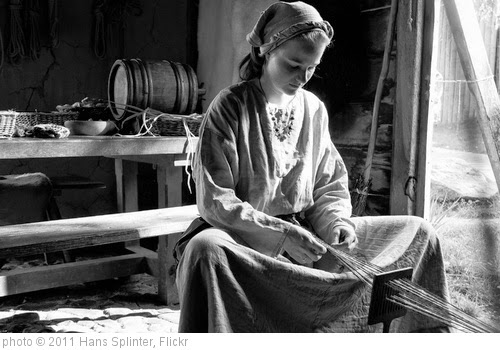| I Picked 2 of these boxes. |
My friend and I went strawberry picking and I was able, (thank-you God) to pick about 12 quarts. The strawberry fields were well groomed and cared for. It took about an hour to pick them. I have frozen some and will make Strawberry Jam with the rest. We also had Strawberry Short Cake for dessert tonight. It was a lovely morning and very productive.
Strawberry Shortcake
Servings: 8 shortcakes
Strawberry topping
Generous pint strawberries
About 3 tablespoons sugar, depending on sweetness of berries
1 teaspoon Cointreau, optional
About 1 cup (or more) heavy cream, whipped to soft peaks
Sugar, to taste
Vanilla extract, to taste
Biscuits
1 1/2 cups all-purpose flour
2 1/4 teaspoons baking powder
4 teaspoons sugar
6 tablespoons chilled butter, cut into bits
3/4 cup heavy cream, plus 1 to 2 tablespoons
Preheat oven to 400 degrees.
Strawberry topping. Hull and slice the berries. Put into a bowl, add the sugar and liqueur and stir until the sugar dissolves. Allow to macerate for at least 30 minutes. Set aside.
Biscuits. Whisk the flour, baking powder and sugar together in a medium-size mixing bowl until blended. Add the butter and work it in with a pastry blender until the size of small peas. Add the cream and stir gently with a fork until the dough comes together. It should be somewhat moist. If not, add more cream by droplets.
Turn out onto a very lightly floured board and knead the dough very lightly several times until it holds together. Roll out to 3/4- to 1-inch thick. With a floured biscuit cutter, cut out 8 biscuits, reusing the scraps gently formed back together and lightly rolled out.
Put onto a baking sheet lined with parchment paper. Brush the tops with cream. Bake for about 15 to 17 minutes until lightly browned.
Remove to a rack to cool.
To assemble, cut each biscuit in half. Lay the bottom half onto a serving plate. Add a dollop of whipped cream, spoon on some berries, add a smaller dollop of whipped cream. Affix the top biscuit. Add a dollop of whipped cream and a generous coating of berries. Serve immediately.
We were at a farm that is not to far away named Fair Wind Farm.
| They grow many kinds of veggies to sell at the Farmers Market. |
Prayer at Harvest and Thanksgiving
O God, source and giver of all things,
You manifest your infinite majesty, power and goodness
In the earth about us:
We give you honor and glory.
For the sun and the rain,
For the manifold fruits of our fields:
For the increase of our herds and flocks,
We thank you.
For the enrichment of our souls with divine grace,
We are grateful.
You manifest your infinite majesty, power and goodness
In the earth about us:
We give you honor and glory.
For the sun and the rain,
For the manifold fruits of our fields:
For the increase of our herds and flocks,
We thank you.
For the enrichment of our souls with divine grace,
We are grateful.
Supreme Lord of the harvest,
Graciously accept us and the fruits of our toil,
In union with Jesus, your Son,
As atonement for our sins,
For the growth of your Church,
For peace and love in our homes,
And for salvation for all.
We pray through Christ our Lord. Amen.
Graciously accept us and the fruits of our toil,
In union with Jesus, your Son,
As atonement for our sins,
For the growth of your Church,
For peace and love in our homes,
And for salvation for all.
We pray through Christ our Lord. Amen.
From Living God’s Justice: Reflections and Prayers, compiled by The Roundtable Association of Diocesan Social Action Directors
JMJ~Tina
I am asking God to Bless, in a special way, all who read my blog.
You are loved!





